A new wave of brazen online scams has been propagating across social media and e-commerce sites, duping tens of thousands with exaggerated claims and sham products. These viral scams center around supposed “breakthrough” devices from a company called “RICPIND”, which promise revolutionary capabilities but deliver only cheap junk.
This investigative report will uncover the truth behind several top RICPIND scams that have infiltrated consumer consciousness through flashy marketing campaigns. We’ll scrutinize the deceptive claims versus reality, expose the fake reviews, and detail the Ripoff tactics used to defraud victims out of millions.
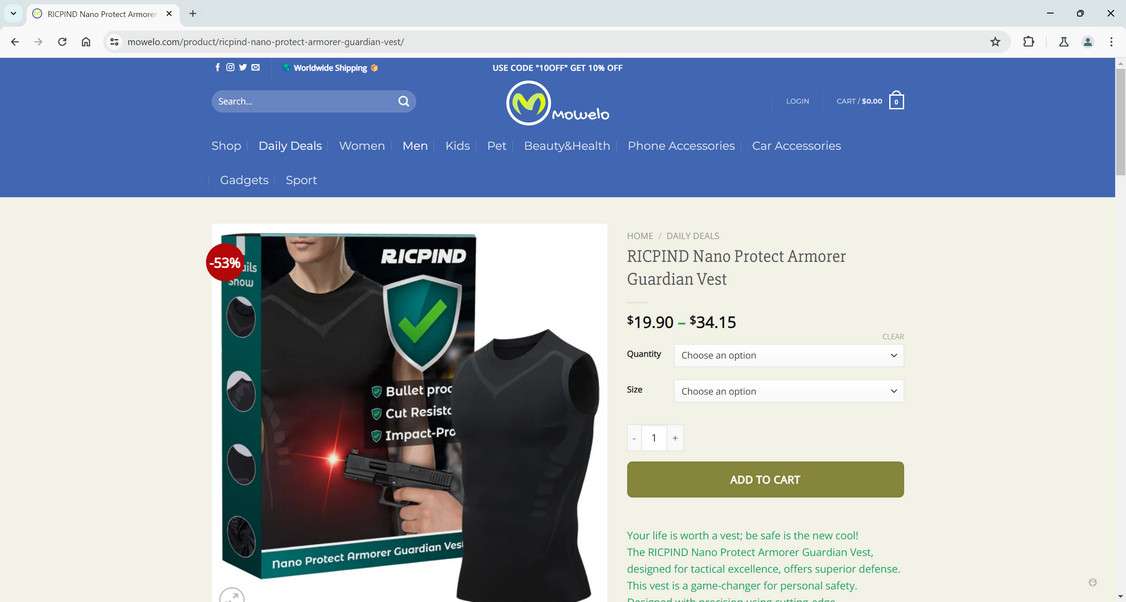
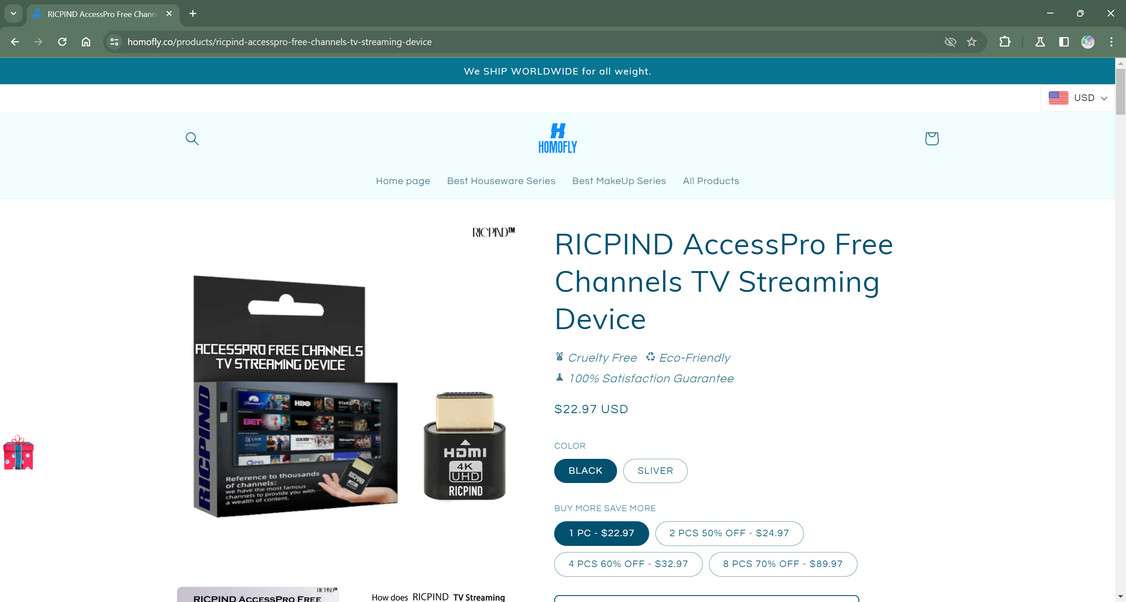
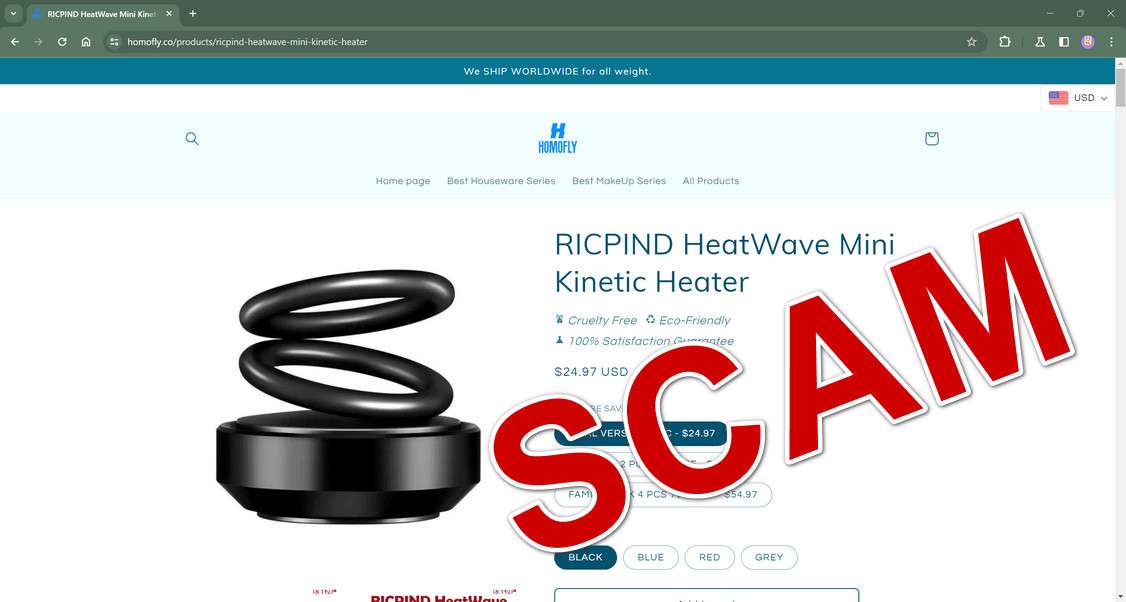
Overview of Major RICPIND Scams Proliferating Online
The fictional “RICPIND” brand name registers strongly with many online shoppers who’ve encountered the aggressive advertisements for their array of supposed “hyper-advanced” products. However, behind the buzzwords and bold promises lies a harsh truth – every RICPIND offering is a complete sham designed to swindle people through deception.
Top examples of these viral RICPIND scams include:
RICPIND Hyper Scan Extreme Long Range Laser Radar Detector – Advertised as a military-grade sensor able to detect speed traps miles away. The $120 device received is just a $2 Bluetooth speaker.
RICPIND Nano Protect Armorer Guardian Vest – Promoted as a revolutionary bulletproof vest with futuristic nanotech. Victims pay $50+ but receive a basic $3 polyester gym shirt.
RICPIND Nano Coat One Way Mirror – Falsely marketed as a “peel-and-stick” film that transforms glass into a covert one-way mirror. In reality, it’s a 30-cent shoe wax sponge.
RICPIND HeatWave Mini Kinetic Heater – Claimed to be a motion-powered winter car heater, but is just a 50-cent air freshener cartridge repackaged into a plastic tube.
These scams each leverage exaggerated claims and pressurized sales tactics to extract payments from misled shoppers, netting the fraudsters behind RICPIND huge illicit profits.
How the RICPIND Scams Tricks Victims through Deceptive Ads
The various RICPIND scams operate using similar deceptive tactics to trick users into purchasing worthless products. Let’s break down their step-by-step process:
Step 1: Eye-Catching Social Media Ads
The scams begin with sponsored ads on social media platforms like Facebook, Instagram, and YouTube. The ads contain sensationalized images and videos along with bold claims about RICPIND’s revolutionary products, portraying unrealistic results. Phrases like “see through walls with ease” are used to grab attention.
Step 2: Misleading Product Pages
Intrigued social media users click on the flashy ads, which direct them to sophisticated scam websites. These pages use faked demonstrations, doctored images, and scientific-sounding language to make claims about nanotechnology, advanced engineering, and military-grade performance.
Step 3: Fabricated Reviews
The scam pages are filled with reviews and testimonials praising RICPIND products’ unbelievable capabilities. However, these reviews are completely fabricated by the scammers to further legitimize the sham products. Fake claims of verified purchases and 5-star ratings seek to overcome skepticism.
Step 4: Psychological Triggers
Scarcity and urgency tactics, such as “only 3 left!” or countdown timers, are used to rush customers into purchasing quickly before they can think twice. Limited-time discounts also encourage impulse buys. Claims that “hundreds” are currently viewing or buying the product taps into peer pressure.
Step 5: Over-the-Top Product Claims
Outlandish claims are made about what the products can supposedly do. Some examples:
- RICPIND Vest: Can stop a .50 cal bullet at 10 feet. Stops 99.9% of handguns and rifles.
- RICPIND Radar Detector: Detects speed traps up to 2 miles away. Intercepts police radio transmissions.
- RICPIND Car Heater: Melts 2 inches of ice instantly. Heats interior to 140°F in one minute.
- RICPIND Mirror Coating: Works on any glass. Makes windows one-way in seconds. Blocks 100% of light.
Such absurd claims lend a false sense of value and exclusivity to convince customers to pay premium prices.
Step 6: Collecting Payments
Scammers use services like PayPal, credit cards, etc. to collect payments rapidly once a customer makes a purchase. Prices range from $19 to $90 per item, despite the real manufacturing cost being only $1 to $3.
Step 7: Shipping Worthless Products
Victims receive cheap, worthless products in the mail instead of the advertised items. A $3 Bluetooth speaker instead of a radar detector. A $2 wax applicator instead of a mirror coating. And so on.
Step 8: Blocking Refunds
When people inevitably complain, the scammers systematically deny refunds through various tactics like claiming the customer failed to follow instructions. Some victims are forced to do chargebacks with their bank to recover funds.
By following this deceptive, calculated formula, the scammers are able to defraud countless customers who fail to recognize the exaggerated marketing and false scarcity tactics. Only avoiding the psychological triggers from the start can keep people from getting ensnared.
Case Study: RICPIND Nano Protect Armorer Guardian Vest Scam
The supposed “RICPIND Nano Protect Armorer Guardian Vest” perfectly illustrates how these ruthless scams operate to deceive well-meaning victims. Advertisements on Facebook and YouTube hype an innovative new bulletproof vest, claiming it uses advanced nanotech to stop high-powered rounds.
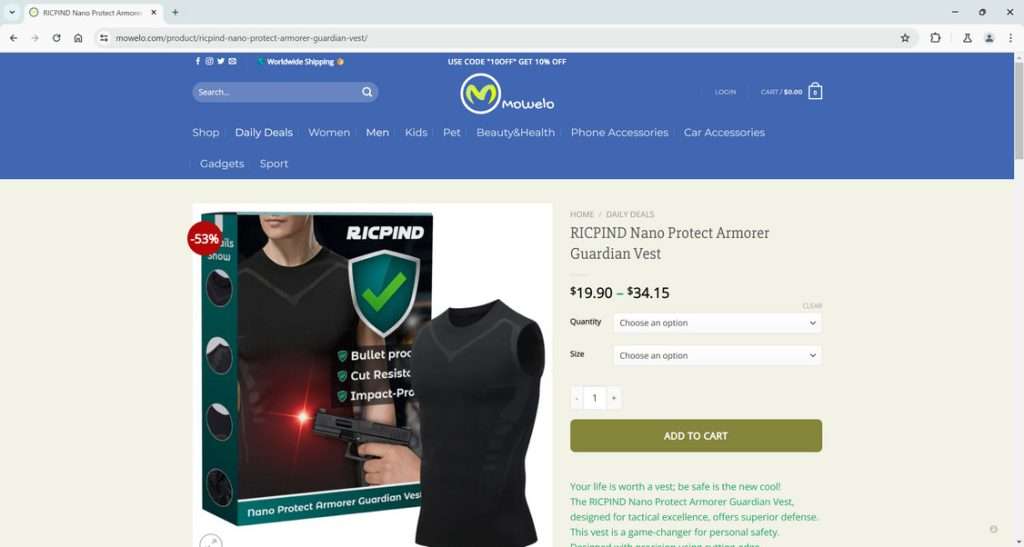
Convinced viewers are funneled to sophisticated websites describing revolutionary materials saving lives in the field. Fake reviews and testimonials reinforce the claims. The highly-pressured checkout process even upssells buyers into expensive multi-vest packages.
But instead of advanced body armor, victims receive cheap polyester tank tops that offer no protection. Demands for refunds are denied or stonewalled. RICPIND pockets up to $90 per victim while sending $3 shirts.
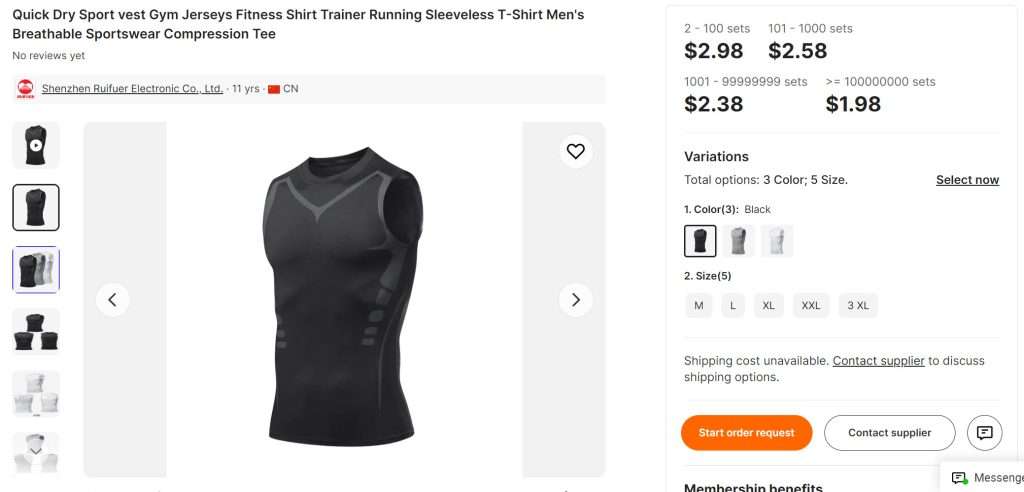
This bait-and-switch tactic meshes proven psychological manipulation with expert blocking of refunds. The result preys on human vulnerabilities to maximize ripoff profits, all based on brazen lies.
What To Do If You’re Victimized By a RICPIND Scam
If you unfortunately fell prey to one of the many scams run by RICPIND peddling worthless junk, take the following actions to limit damages:
1. Request Refund Immediately – Demand a return/refund firmly but professionally, backed by documentation. Go up the management chain.
2. File Complaints – Submit reports to the BBB, FTC, state attorney general, and other consumer protection groups.
3. Dispute Charges – Call your credit card/bank to contest the charges as fraudulent. Provide evidence.
4. Leave Online Reviews – Expose the scam in reviews to warn others from being victimized too.
5. Monitor Accounts – Watch for signs of any additional identity theft if payment info was compromised.
6. Seek Legal Counsel – Consulting a lawyer may advise options for civil action to recover losses.
7. Seek Counseling If Needed – Don’t internalize blame. Scam trauma is real. Talk to professionals.
The more swiftly you take action, the better chances of exposing the scam and achieving some financial recovery. Make your voice heard to protect others.
Frequently Asked Questions About RICPIND Scam Products
1. What are the RICPIND scams?
RICPIND scams refer to a series of deceptive online schemes involving gadgets and gear falsely marketed under the RICPIND brand name. Scammers advertise unbelievable capabilities and features using exaggerated claims.
2. What types of products are used in RICPIND scams?
Some common products advertised in RICPIND scams include bulletproof vests, car dashboard cameras, radar detectors, emergency heaters, smartwatches, hidden cameras, and more.
3. How do RICPIND product scams work?
Scammers run flashy social media ads making bold claims about RICPIND gadgets. Tricked users click these ads, visiting realistic scam sites exaggerating the items’ capabilities using fake reviews and countdown timers. Victims receive cheap generic products not matching advertisements.
4. What capabilities do scammers falsely claim?
Outlandish claimed capabilities include vests stopping high-caliber rounds, detectors scanning 2+ miles, cameras seeing through walls, and other unrealistic powers. This aims to justify the inflated prices.
5. What do victims of the scams receive?
Despite paying inflated prices of $50-$100+, victims receive cheap $1-$5 products like generic Bluetooth speakers, plastic dashboard mounts, shoe wax applicators, and polyester t-shirts.
6. How much do RICPIND scam victims get charged?
Customers get overcharged up to 10-20X the actual value of items. Scammers charge $80 for a $3 camera or $125 for a $2 wax sponge, profiting from deception.
7. Can scam victims get refunds?
Refunds are intentionally made difficult. Scammers auto-deny requests, force customers to pay return shipping, or ignore communications. Persistence and legal action may be required.
8. Where are RICPIND products advertised?
YouTube, Facebook, Instagram ads are common places to find RICPIND scams. Scammers make realistic looking sites to further legitimize the bogus products.
9. Are RICPIND products sold in stores?
No. RICPIND is a fake brand name only found online. No physical stores sell these products. All sites are scam operations without actual inventory or facilities.
10. How can I avoid RICPIND scams?
Apply skepticism when assessing too-good-to-be-true claims, especially around safety/security products. Vet sellers thoroughly and avoid impulse buys from ads or testimonials. If it seems unrealistic, it likely is.
The Bottom Line
The various online scams involving exaggerated RICPIND branded products represent a real threat all consumers should stay vigilant against. Skilled scammers are exploiting people’s desires for security and convenience by promoting sham goods via convincing online ads and websites.
It’s crucial to always exercise skepticism rather than get pulled in by dramatic marketing claims. If an offer seems too good to be true, it almost certainly is. Take time to thoroughly research sellers and consult objective reviews before any purchase. Avoid making quick impulse buys based on social media ads or testimonials.
By staying cautious and doing your due diligence, you can ensure you never fall prey to these deceptive RICPIND schemes. It pays to be prudent when your personal information, money, and potentially safety are on the line.










